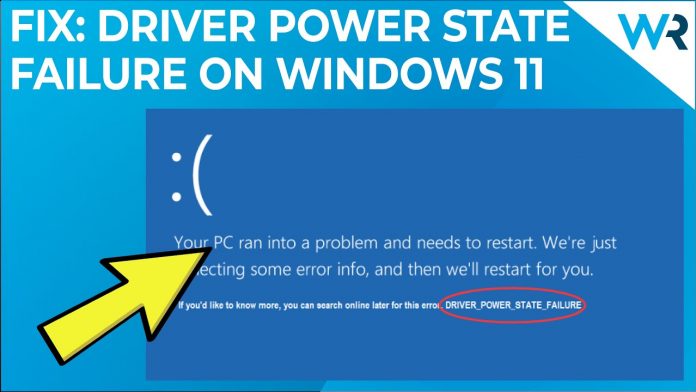There are many reasons why you might see the “Driver Power State Failure” error in Windows. This can be caused by a number of things, including bad drivers, power issues, and hardware problems.
If you see this error, the first thing you should do is check your drivers. Make sure you have the latest drivers for your video card, sound card, and any other devices you have installed. You can usually get the latest drivers from the manufacturer’s website.
If you’re still seeing the error after updating your drivers, it’s possible that there is a power issue. Try plugging your computer into a different outlet, or using a different power strip. If that doesn’t work, you may need to replace your power supply.
Finally, if you’re still seeing the error, it’s possible that there is a hardware problem. Try reseating your video card, sound card, and any other removable devices. If that doesn’t work, you may need to replace the affected piece of hardware.
FIX Driver Power State Failure in Windows 11
If you’re seeing the “Driver Power State Failure” error in Windows, it’s usually caused by an issue with your power supply or your drivers. Download DriverFix it, you can try updating your drivers, reset your power settings, or running a System File Check.
If you’re getting the “Driver Power State Failure” error, it means that one of your drivers is causing a problem. To fix it, you can try updating your drivers. To do that, open Device Manager, find the driver that’s causing the problem, and then update it.
If updating your drivers doesn’t fix the problem, you can try resetting your power settings. To do that, go to Control Panel > Hardware and Sound > Power Options. Then, click “Change plan settings” and “Restore default settings.”
If resetting your power settings doesn’t fix the problem, you can try running a System File Check. To do that, open Command Prompt and type “SFC /Scannow.”
Reason for This Error
The Driver Power State Failure is a relatively common error that can occur in Windows. The error is usually caused by a problem with the drivers, but it can also be caused by hardware issues or other problems. The error can be fixed by updating the drivers, but it can also be fixed by other means.
The ‘Driver Power State Failure’ error is caused by a problem with the drivers for your devices. This can be caused by a variety of issues, including outdated or corrupted drivers, power issues, or problems with the hardware itself.
If you’re seeing this error, it’s important to update your drivers and make sure they’re all working properly. You can do this manually by going to the manufacturer’s website and checking for updates, or you can use a driver update tool like Driver Easy to automate the process.
Once you’ve updated your drivers, it’s also important to check for any power issues that could be causing the problem. This includes making sure that your power cord is plugged in properly and that your power supply is working correctly. If you’re still having trouble, it’s possible that there’s a problem with the hardware itself and you may need to replace it.
Last Words
The last words of ‘Driver Power State Failure’ are often a desperate plea for help. The driver may be in a state of panic, feeling that they are about to lose control of their vehicle. They may also be feeling helpless and alone, knowing that they are about to crash. These final words can be a cry for help, a plea for someone to save them, or a final goodbye to loved ones.
FAQ’s
Which method worked for you?
- Method 1: Turn off fast startup and go to safe mode
- Method 2: Disable third-party antivirus
- Method 3: Reboot the computer in safe mode with networking
- Method 4: Fix driver power state failure in Intel Smart Connect Technology
How do you solve the Driver Power State Failure error in Windows?
- I use Driver Easy
- I turn off my computer and turn it back on
- I run the System File Checker scan
What’s the best way to fix this error?
- Reboot your computer at 29%
- Use Driver Easy to update your driver by 15%
- Use Driver Booster to update your driver by 10%
- Uninstall the problematic device and then plug it back in to install the drivers again 9%
- Update your BIOS and make sure it’s up to date 8%.
